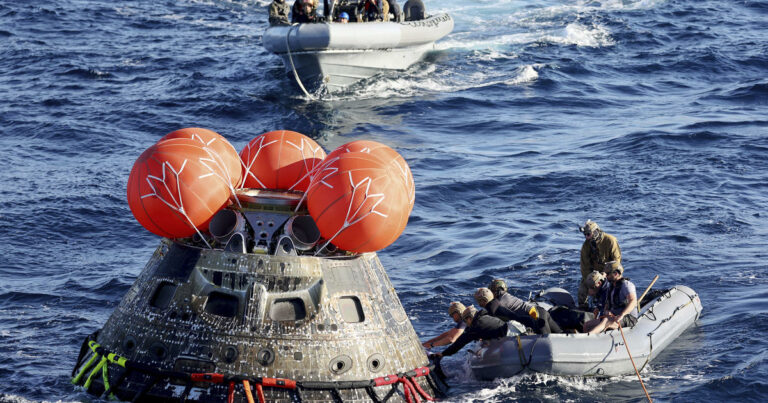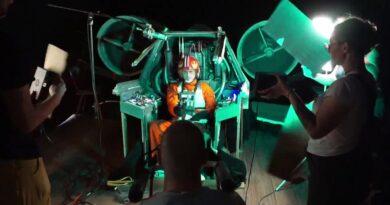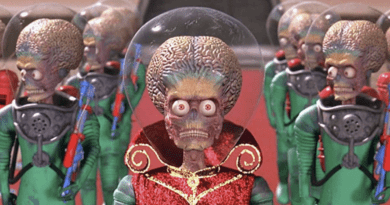Orion touches down on Earth
By Kieran Burt.
On 11 December 2022, Orion splashed down in Pacific ocean, and completed its 25 day mission to orbit the moon.
The capsule landed to the west of Mexico’s Baja California near Guadalupe Island.
The craft has been some 430,000km (270,000 miles) beyond the Earth – the furthest any spacecraft designed to carry humans has travelled.
Though this mission was unmanned, it did have three dummies wired to vibration sensors and radiation monitors to see how humans would be affected.
Manned missions are planned in 2024, 2025, and 2026 using the Orion capsule.
“Splashdown!” the Mission Control commentator Rob Navias announced. “From Tranquility Base to Taurus-Littrow to the tranquil waters of the Pacific, the latest chapter of Nasa’s journey to the moon comes to a close. Orion back on Earth.”
Mike Sarafin, the Artemis project manager couldn’t hide his delight with the splashdown. “Folks, this is what mission success looks like.”
Nasa’s main objective was to test the heat shield on Orion
Vehicles coming back from lunar distances do so at very high speed – some 40,000km/h (25,000mph) at initial contact with the atmosphere.
A robust heatshield is needed to prevent the ship from tearing itself apart as it pushes up against the air and temperatures reach close to 3,000C.
Since the protective layer on the underside of Orion is a new design, Nasa had to be sure it was effective before risking the lives of astronauts on future missions
December 11 also marked 50 years since humans were last on the moon.
The Apollo 17 crew of Eugene Cernan and Harrison Schmitt spent just over three days on the lunar surface before coming home.
Orion blasted off on November 16 from the Kennedy Space Center in Florida’s Cape Canaveral. Over the course of its $4bn flight, Orion spanned 1.4m miles (2.25m km) and came within 80 miles (130km) of the moon during a week-long orbit.
The mission was plagued with delays, with technical problems and Hurricane Ian pushing take off from August to November. Orion’s mission time had also been cut down, with it originally being 42 days long.
A crew for Artemis II will be chosen early in 2023, with the next mission planned to launch in May 2024.




